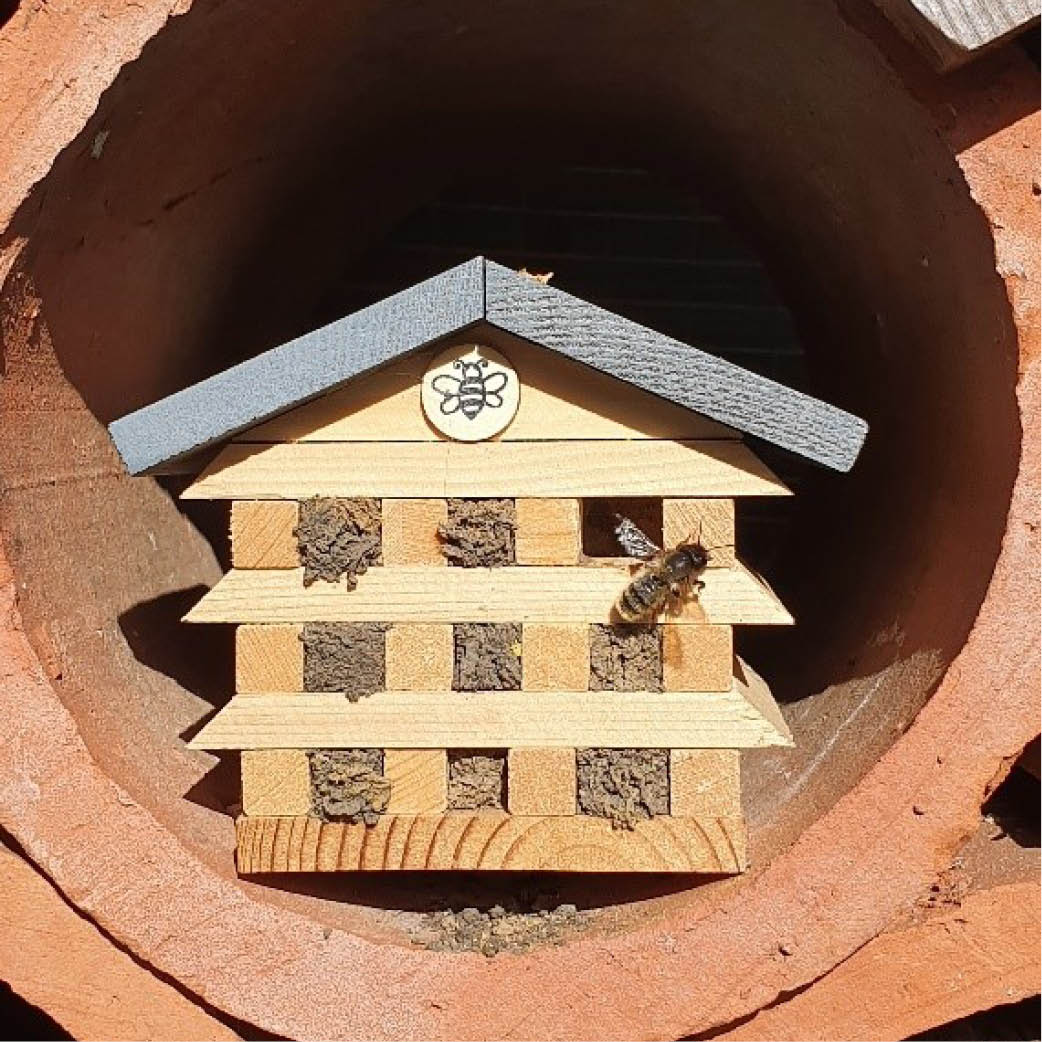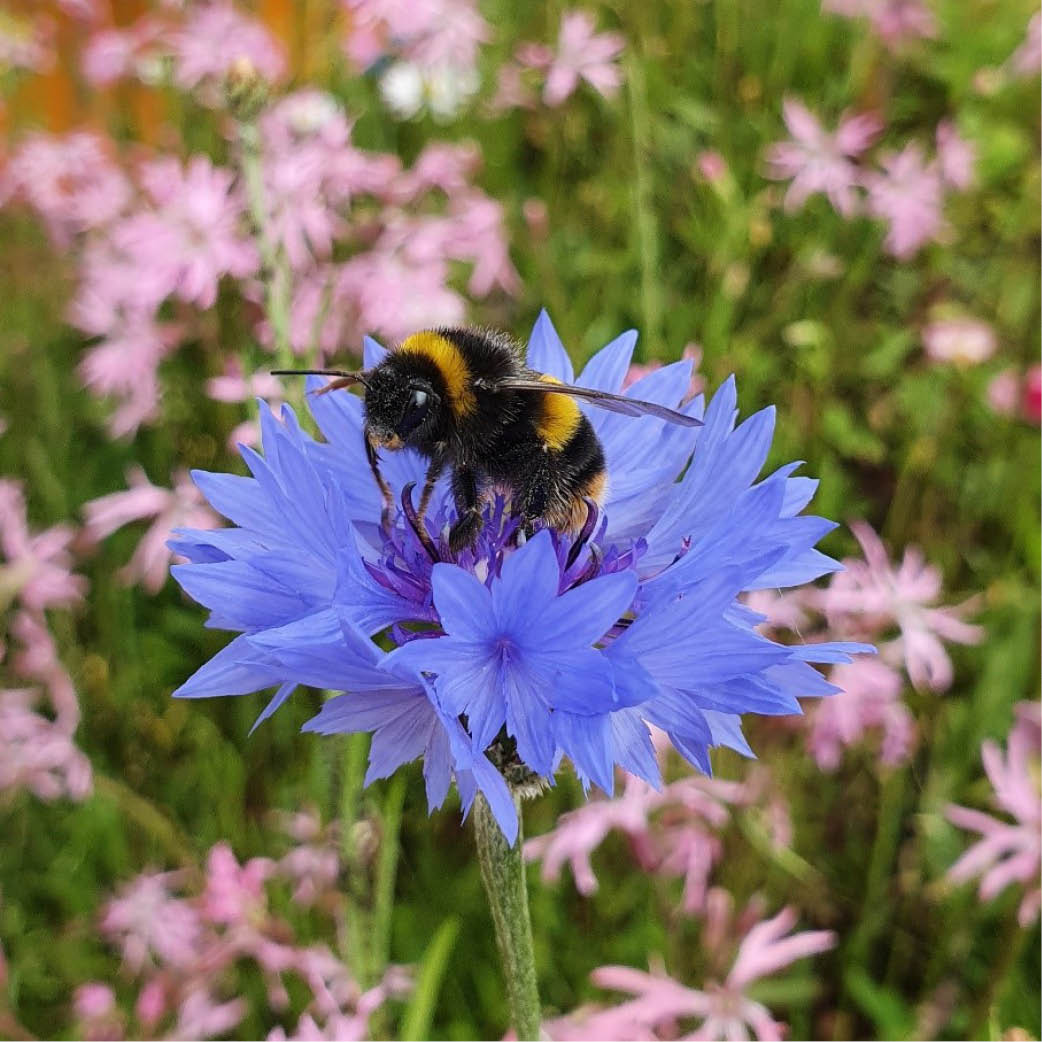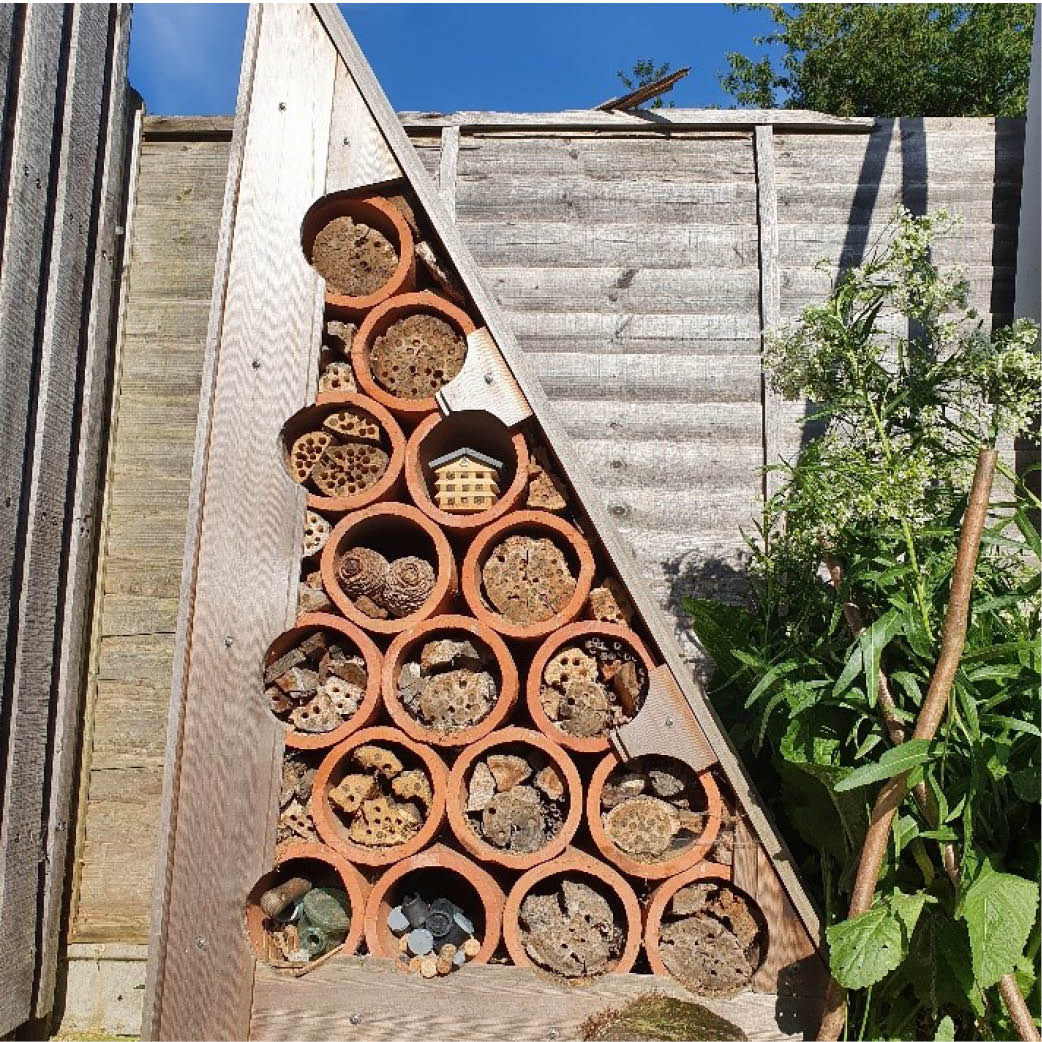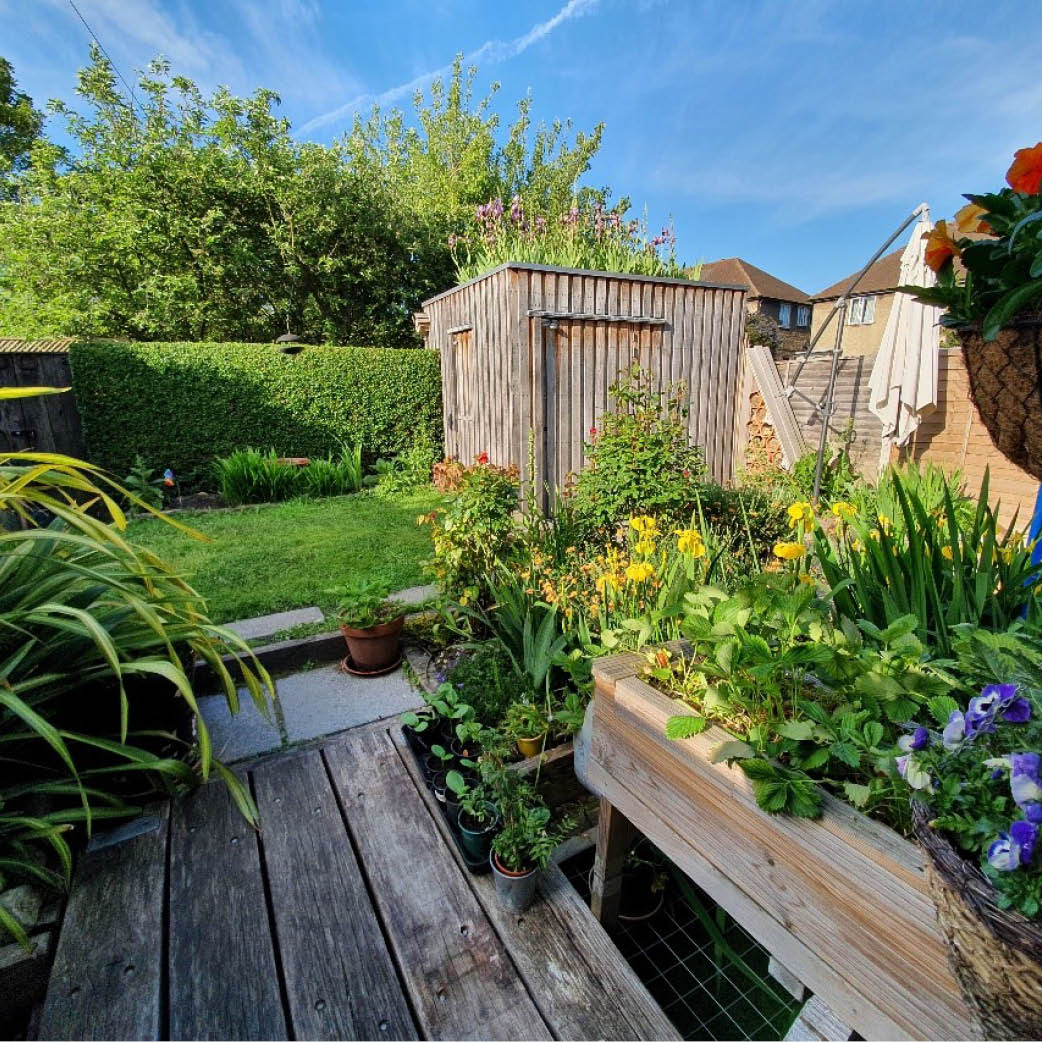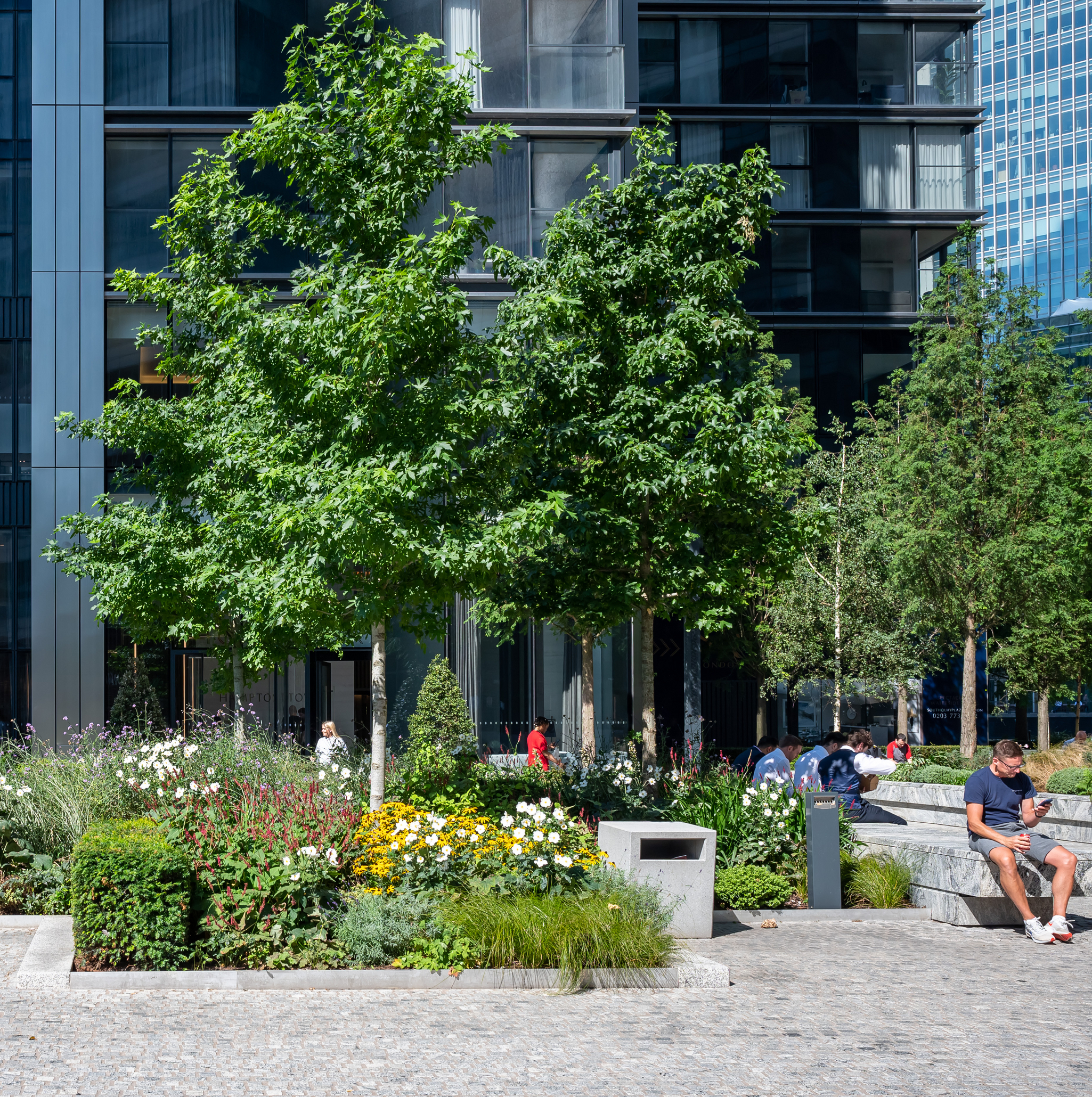According to the Wildlife Trust there are around 270 species of bee in Britain with just under 250 species of solitary bee. Most of us will only be able to identify all but a few of these but they all need habitat to thrive with access to food, clean water and places to live as we do.
Much as we might create great places that we want to live in we must also create suitable habitat for all insects and especially bees. Making a contribution is really important and every inch counts even if we have only very tiny spaces on balconies or small gardens. Every opportunity needs to be taken to ensure the survival of insect species that underpins much of the plant life vital to our own survival.
As individuals we collectively have a role to play in creating habitat using low impact natural materials, maximise re-use and upcycling and to avoid spending sums of money on products that are often contain plastic and have a negative carbon footprint as this undermines what we are trying to achieve in the first place – to protect and rebuild our natural environment.
I built my first bee hotel in my own small back garden in response to a growing concern about the disastrous decline in the bee population due to pollution, pesticides and habitat loss. There was also a colony of masonry bees mining out the sandy 1930s mortar of my mid terrace house and they had to be rehoused before the bricks fell out!
My bee hotel is designed to use disused Victorian drainage pipes dug up from the back garden. The shape of the hotel is based the optimal stacking of the pipes and is held together with naturally durable timber such as oak left over from fencing with western red cedar rainscreen bought cheaply as damaged stock from a local timber merchant.
The individual bee hotel rooms are created from split Chestnut coppice poles with a variety of hole sizes up to 12mm in diameter drilled well into the wood. I have also included pipes cones and other ways of creating spaces as needed for a whole variety of insects.
The greatest fun of all is watching the population of solitary bee’s hurry from nearby flowers filling burrows with pollan with fine mud lined food stores tucked back in the hole and a mud plug to close the door. But as the rooms fill up always be ready to drill more holes!
by Matt Hoad

